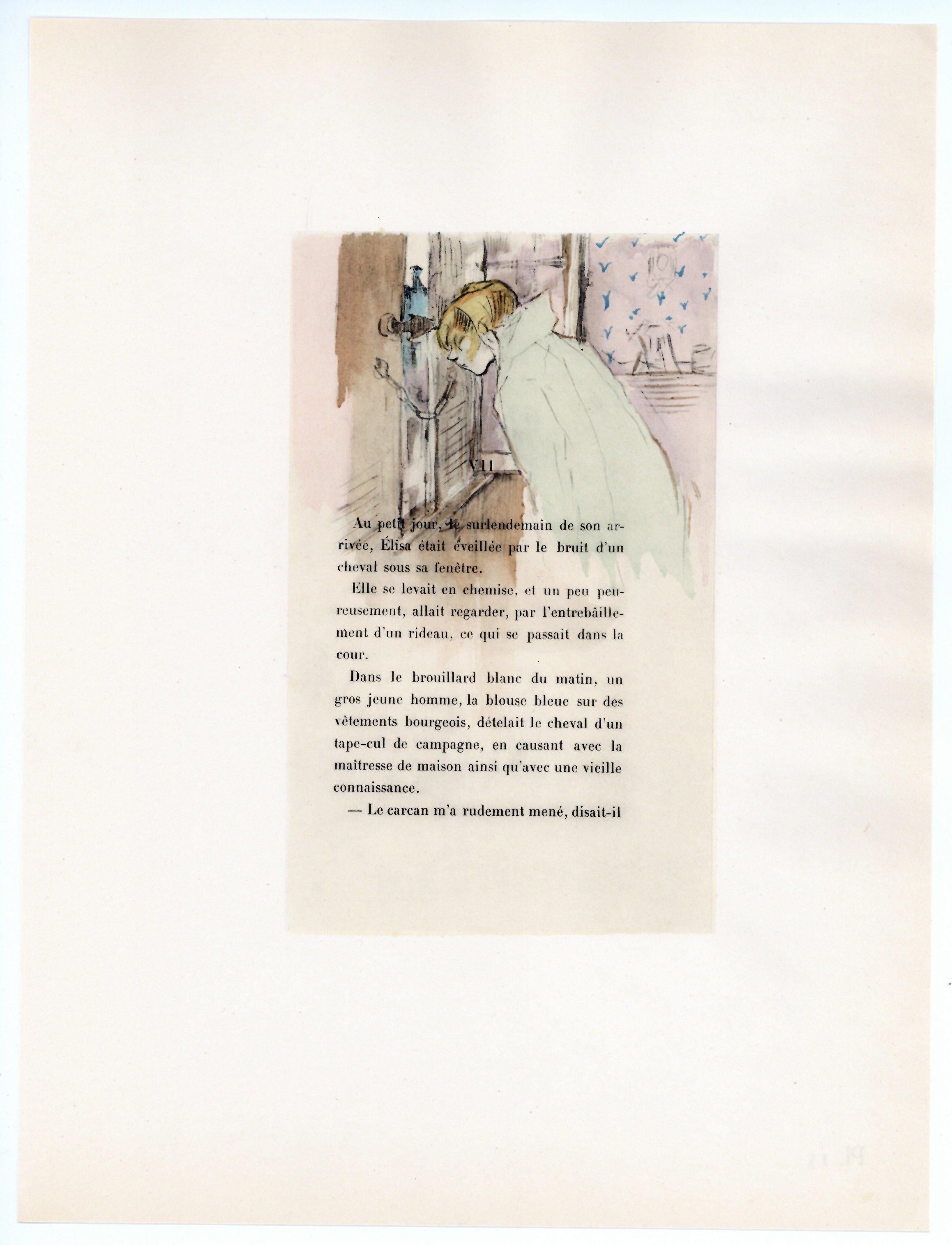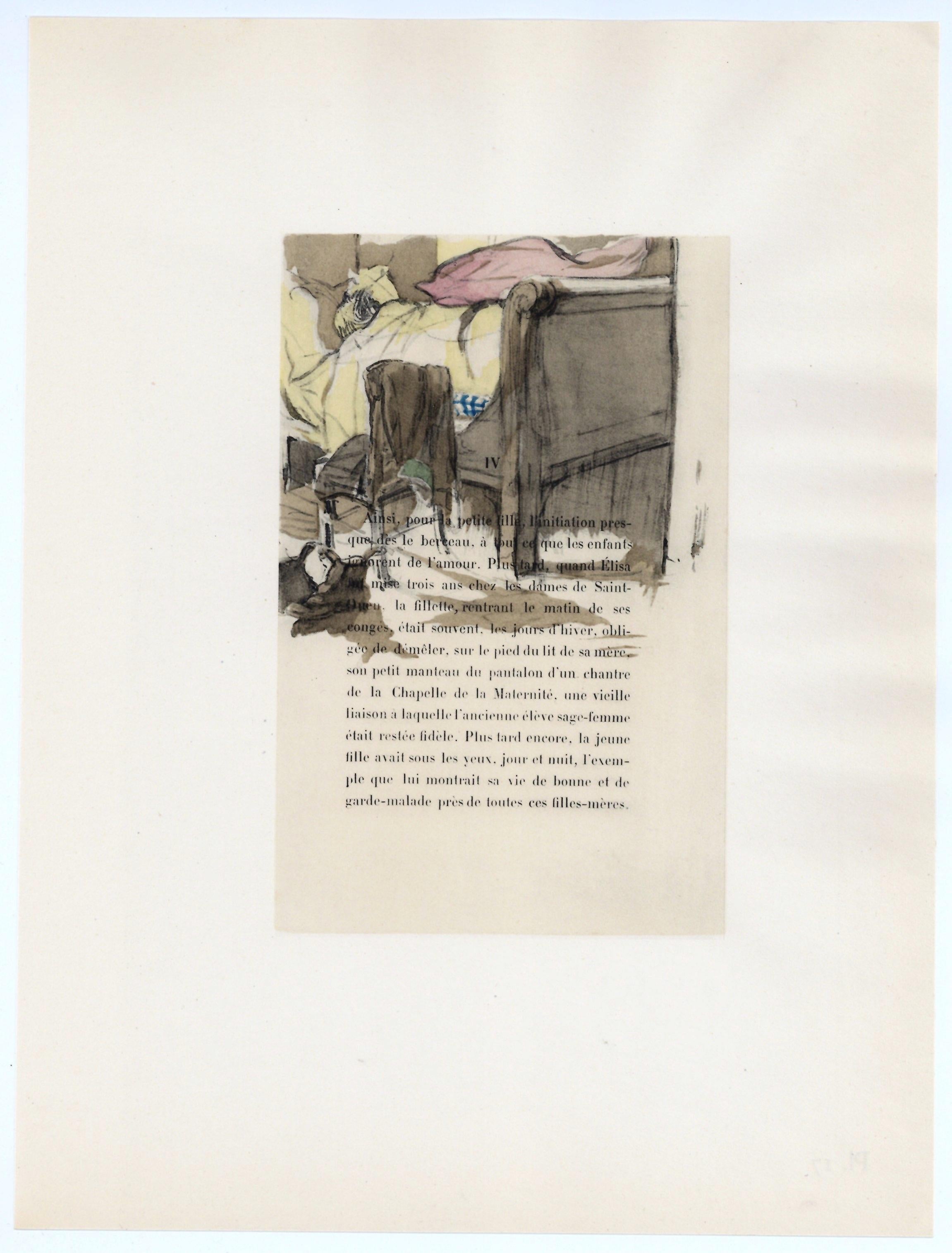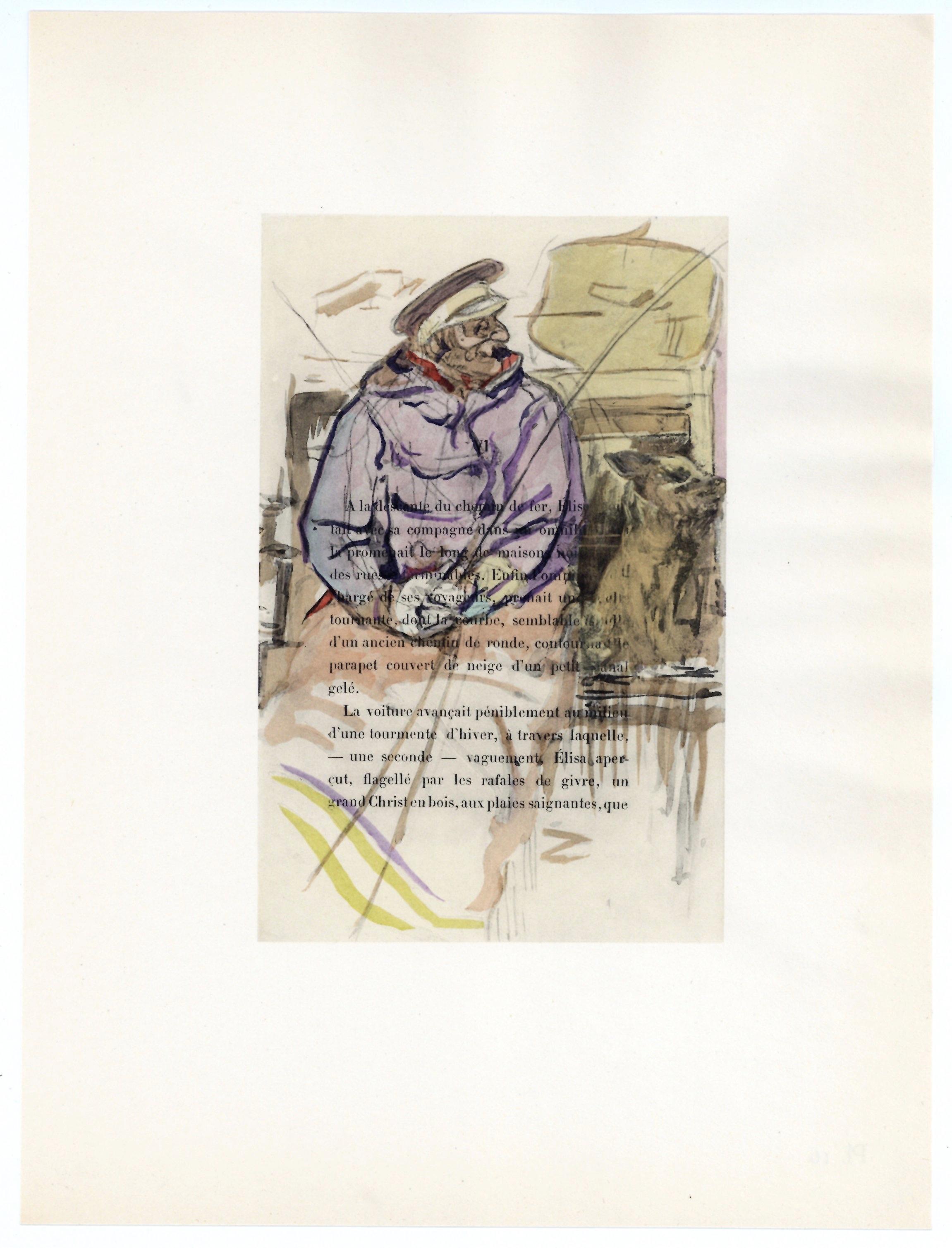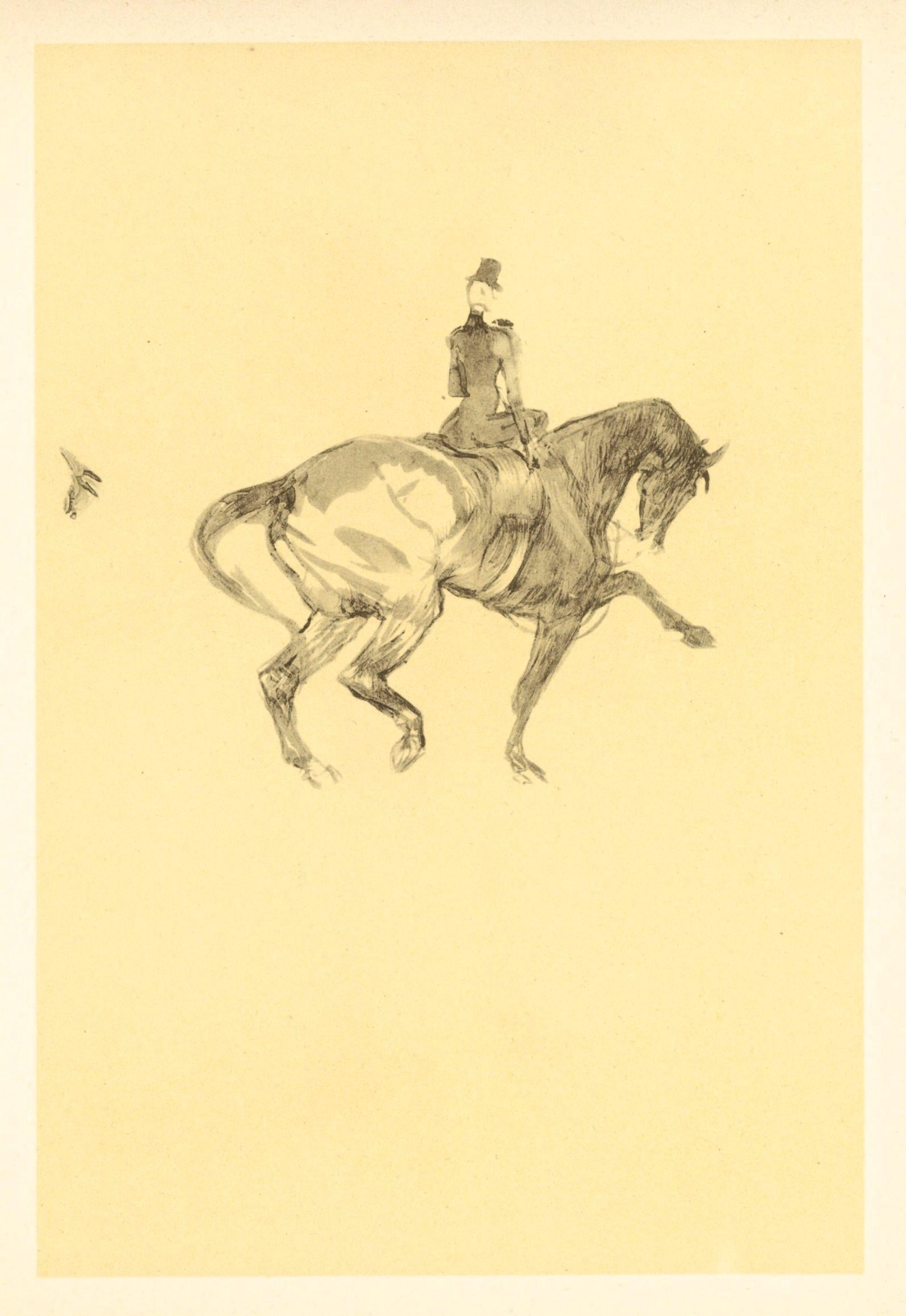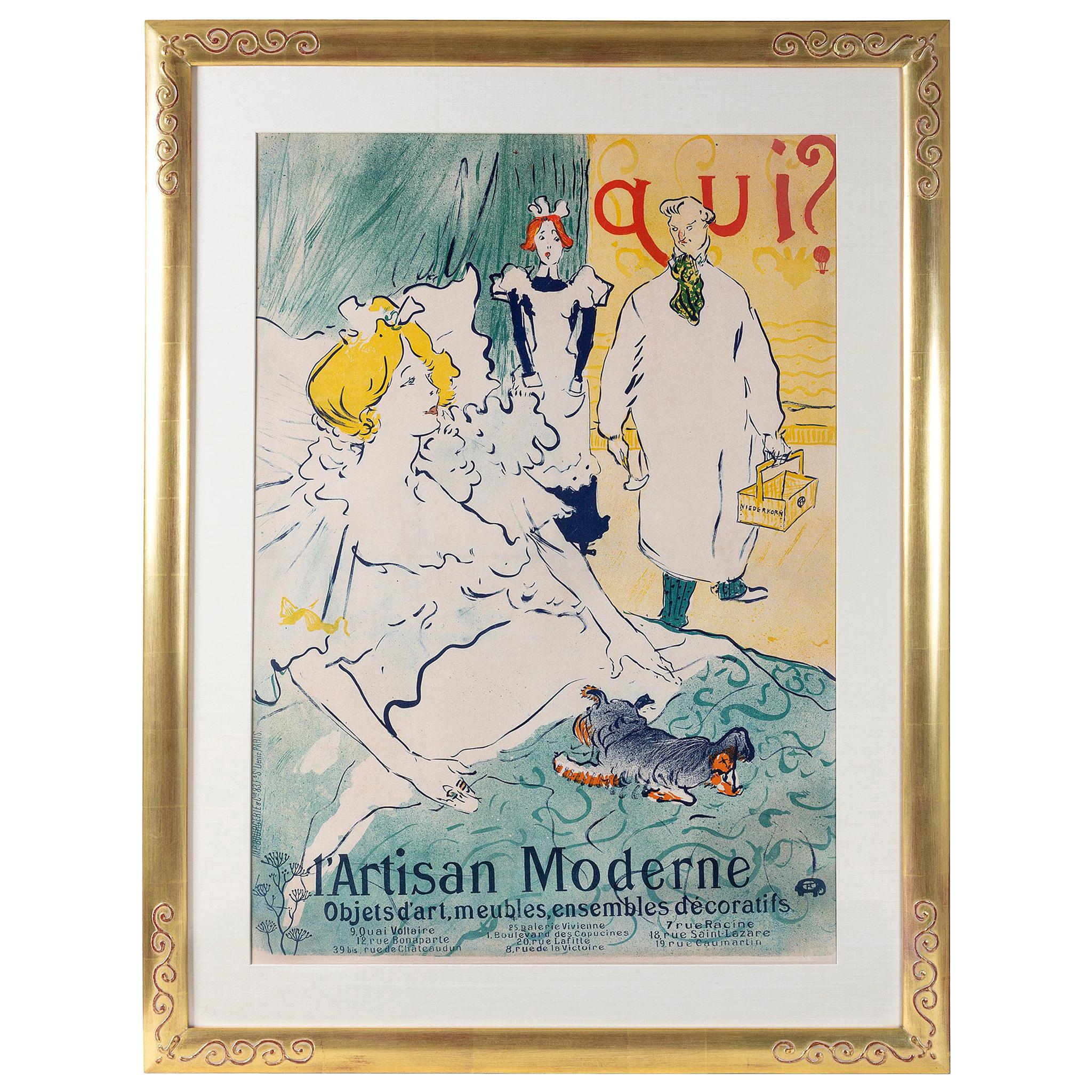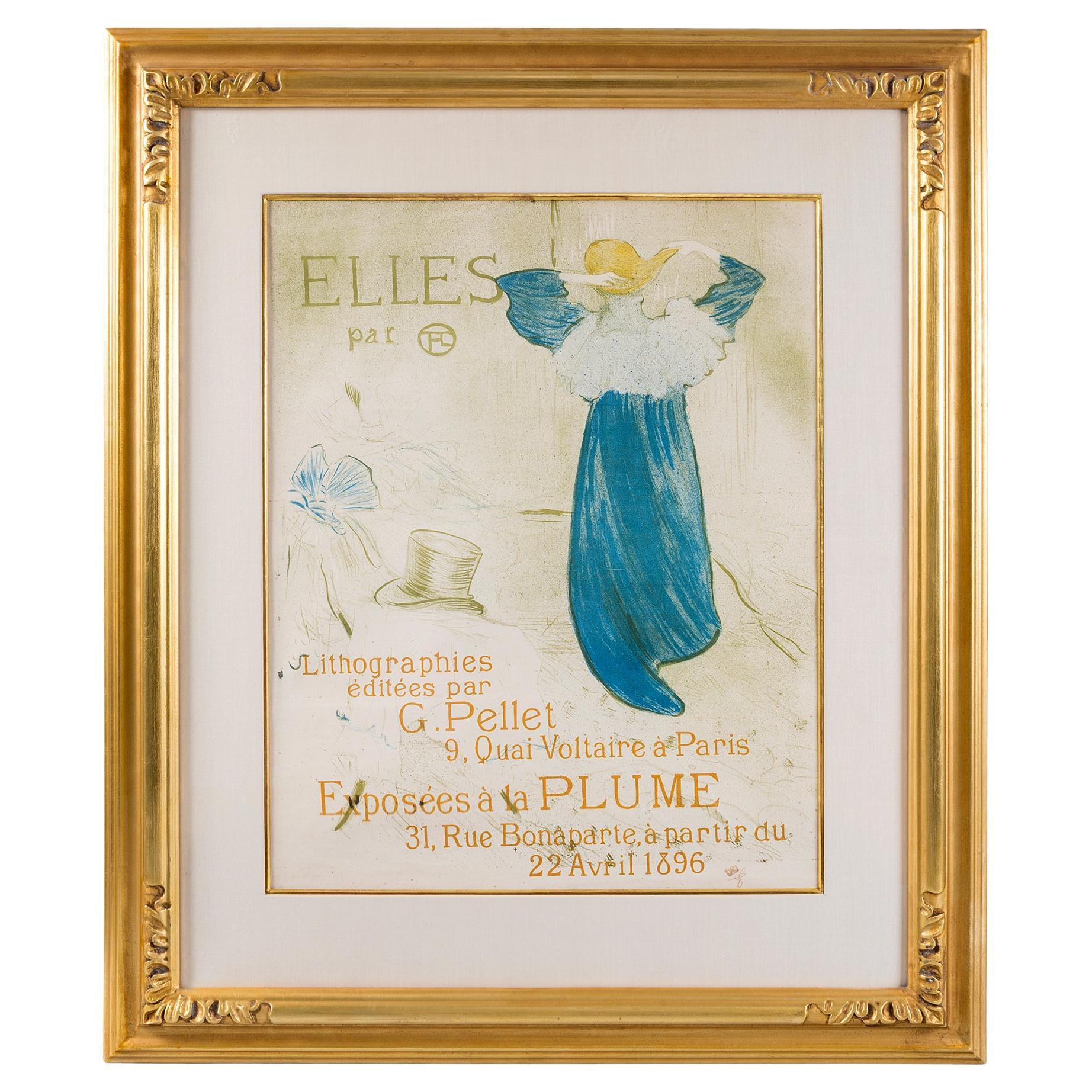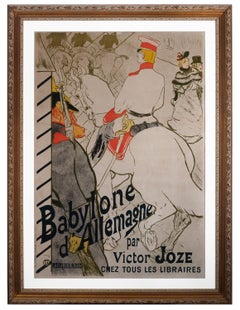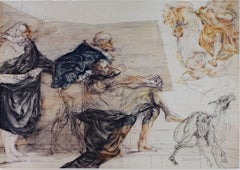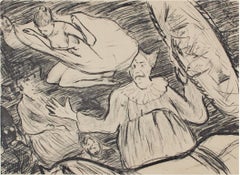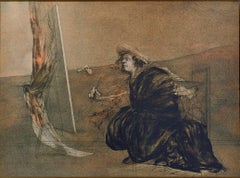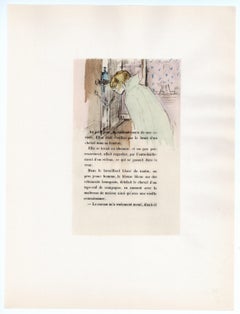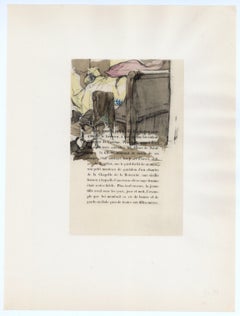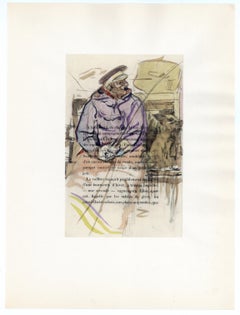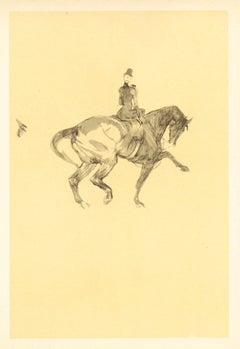"Lautrec Book: From Au Pied du Sinai written by Georges Clemenceau" lithographs created by the legendary Henri de Toulouse-Lautrec. This book, Au Pied du Sinai, contains a fine example of the lithographic work of Henri de Toulouse-Lautrec and a rare case of political subject matter for the artist. The set is numbered 17 from the deluxe edition of 25. This deluxe edition was published outside the ordinary edition of 355 but concurrent with it. With text written by the journalist Georges Clemenceau, this edition contains a total of forty-six original lithographs on japon paper (the larger edition is on Arches paper), approximately 14 x 9.75 inches, executed in 1897 and published in 1898. The portfolio includes four sets of proofs: three sets of ten signed in stone (Loys Delteil no. 236-245), plus one set of ten lithographs each signed in pencil. Also, it includes one suite of four refused lithographs signed in stone, complete with text. There are six lithographic vignettes at the end of each chapter (five in total) printed along with the text and signed in stone. Importantly, this set contains the original prospectus sheet and two original color lithograph covers. Published by Floury and printed by Chamerot et Renouard, the prints were never bound and retain their original margins.
Fifteen lithographs were framed for exhibition at the David Barnett Gallery in 2012. Each print is framed to conservation standards using archival materials, including 100 percent rag matting, museum glass to inhibit fading, and are housed in a silver finish cassetta-style moulding. The framed prints include: LD 235 (cover), LD 236-245 signed in pencil, and LD 246-249 signed in stone refused lithographs.
Ref: Wolfgang Wittrock. Toulouse-Lautrec: catalogue complet des estampes, Volume 1. Paris: Courbevoiz, 1985, p. 449.
Ref: Loys Lelteil, Le Peintre-Graveur Illustre: The graphic works of nineteenth and twentieth century artists. Vol. XI Toulouse-Lautrec. New York: DaCapo Press, 1969.
Historical Context:
Henri De Toulouse-Lautrec (1864-1901) was born on November 24th in Albi, France to an aristocratic family. The artist's parents were first cousins, and inbreeding might have been the cause of many of Toulouse-Lautrec’s physical ailments. By the age of thirteen, he had fractured both of his thigh bones, and due to an unknown genetic disorder they failed to heal properly. As a result, Lautrec had a normal-sized upper body and dwarf-like legs. He walked with great difficulty with a cane. The artist immersed himself in art from a young age and it was within an avant-garde artistic milieu that he worked and found acceptance. Henri Toulouse-Lautrec’s life was short; he died on September 9th, 1901, less than three months before his thirty-seventh birthday, from complications from alcoholism and syphilis.
Although Toulouse-Lautrec died tragically at thirty-six and his career lasted just over a decade, he produced many influential works of art in an instantly recognizable style. From 1891-1901, the artist produced nearly 350 lithographic posters, editions, portfolios, and illustrations for journals and theatre programs. Significantly, his career coincided with the birth of modern printmaking and the explosion of nightlife culture. Lautrec was an innovator of lithographic techniques and adopted an avant-garde style in both his paintings and prints. For example, Lautrec employed the splattered ink technique called crachis to dramatic effect in his prints. The artists Edgar Degas and Edouard Manet are clear formal and conceptual influences for Lautrec. In addition, he was heavily influenced by Japanese ukiyo-e prints which feature areas of flat color with bold outlines, silhouettes, cropped compositions, and oblique angles. And his choice of subject matter--actors, actresses, dancers, prostitutes, and those on the fringes of society--can be likened to the "floating world" of Edo-period Japan (1603-1867). In 1882, Toulouse-Lautrec moved to the Montmartre neighborhood of Paris, which had replaced the Latin Quarter as the site of the city's intellectual and artistic community. Montmartre boasted a thriving bohemian culture that was driven by its critique of bourgeois society. Performances at its cafe-concerts and cabarets featured satires and crude shows that mocked Third Republic France's bourgeois morality and corrupt politics (Nicole Myers, "The Lure of Montmartre," p. 2). For Lautrec, who was shunned by aristocratic and bourgeois society and in turn rejected it, Montmartre was a haven and there is a certain elision between the artist himself and his portrayal of his subjects. While Lautrec already had been representing life in Montmartre for some time, in 1889 he was commissioned to produce a series of lithographic posters for the newly opened nightclub, the Moulin Rouge. These posters were so well received that he always had a seat reserved for him at the cabaret. His works reflect his obsession with Montmartre's nightlife, in particular the cabaret and brothels. By often stripping away the glamour of the spectacle and portraying the gritty reality of Montmartre's denizens, Toulouse-Lautrec’s artworks were some of the most innovative of his time. He took a dispassionate look at aspects of life that were imperfect--even grotesque--and often rendered his subjects sympathetically.
“Au Pied du Sinai” was written in 1897 by Georges Clemenceau and illustrated by Henri de Toulouse-Lautrec. While the circumstances of its creation are unclear, the book was a response to the Dreyfus Affair, in which Captain Alfred Dreyfus, an Alsatian Jew, was falsely accused of treason, an event which heightened anti-Jewish fervor in an already anti-Semitic France. Clemenceau was the publisher of "L'aurore," the Socialist newspaper that published Emile Zola's article "J'accuse...!," which increased public support for Captain Dreyfus and put pressure on the French government to reopen his case. "Au Pied du Sinai" was published three months after "J'accuse...!" Clemenceau was a strong supporter of Dreyfus. His stated intent in writing "Au Pied du Sinai" was to offer a positive and sympathetic portrayal of the Jewish community. Lautrec's motives were less clear; he claimed to be politically neutral. He wrote to his mother that Clemenceau's book was "against" the Jews and later wrote that it was "about" the Jews. In any case, the context surrounding the book was one of political and social division and deep anti-Semitism in France. From an historical perspective, this piece offers a view into the political and social discourse taking place in France during a political scandal that spanned twelve years and continues to be a reference point for the discussion of injustice in France to this day. It might be argued that Lautrec and Clemenceau, like their fellow intellectuals in nineteenth-century France, participated in what was then considered a scientific practice of classifying and typing people through the use of stereotypes. Thus, it is not surprising that Au Pied du Sinai classified Jews as a "Semitic type," as "others"--apart from the French--even as it claimed to normalize and support them.
The book itself is divided into six stories, expressing Clemenceau’s and Toulouse-Lautrec’s purported defense of and admiration for the Jewish people. The Couverture (LD #235) represents two scenes in a landscape from the Hebrew Bible: the front depicts a darkly silhouetted, crouching, almost animalistic Moses receiving the Ten Commandments, and the back portrays the Golden Calf deposed from its pedestal. By depicting these two Biblical stories on the Couverture, Toulouse-Lautrec connected modern Jews to their ancient roots. For the lithographs, Lautrec spent hours in the Tournelle quarter of Paris, sketching poor Russian and Polish Jews. The individuals, rendered in the artist’s linear and sketchy style, are presented in stark relief and often in profile, highlighting the artist's often stereotypical rendering of their features. In two of the images (Georges Clemenceau and the Oculist Mayer, LD #242 and Clemenceau a Busk, LD#245), Lautrec inserted Clemenceau himself.
Georges Clemenceau and Henri de Toulouse-Lautrec created a book that is reflective of the social and political context of the Dreyfus Affair. Despite its sympathetic intention, Au Pied du Sinai is a work that is deeply ambivalent and yet one that had the potential to make a difference in the lives of the Jewish population at the time. Scholars have argued that French anti-Semitism ran so deep that even when trying to be "fair," Clemenceau couldn't help being anti-Semitic (Julia Frey, Toulouse-Lautrec, A Life, p. 431). It is certain, however, that Toulouse-Lautrec’s dramatic lithographs are masterfully executed and brought Clemenceau’s stories to life.
1. LD #235: Au Pied Du Sinai, Couverture 15” x 21” paper
2. LD #236: Le Baron Moise (La Loge) - (The Baron Moise)
3. LD #237: Le Baron Moise Mendiant – (The Beggar Baron Moise)
4. LD #238: Arrestation de Schlome Fuss – (Schlome Fuss Arrested)
5. LD #239: Schlome Fuss a La Synagogue – (Schlome Fuss at the Synagogue)
6. LD #240: Les Juifs Polonais, Carlsbad – (Polish Jews, Carlsbad)
7. LD #241: La Priere des Juifs Polonais – ( Polish Jews at Prayer)
8. LD #242: Georges Clemenceau et L'Oculiste Mayer – (Georges Clemenceau and the Oculist
Mayer)
9. LD #243: Une Arriere-Boutique a Cracovie – (A back room in Krakow)
10. LD #244: La Halle Aux Draps, Cracovie – (The Cloth Hall, Krakow)
11. LD #245: Clemenceau a Busk
12. LD #246: Au Pied Du Sinai, 12” x 20” paper
13. LD #247: Schlome Fuss a La Synagogue – (Schlome Fuss at the Synagogue)
14. LD #248: Un Cimetiere en Galicie – ( A Graveyard In Galicia)
15. LD #249: Le Cimetiere de Busk – (The Busk Cemetery)
